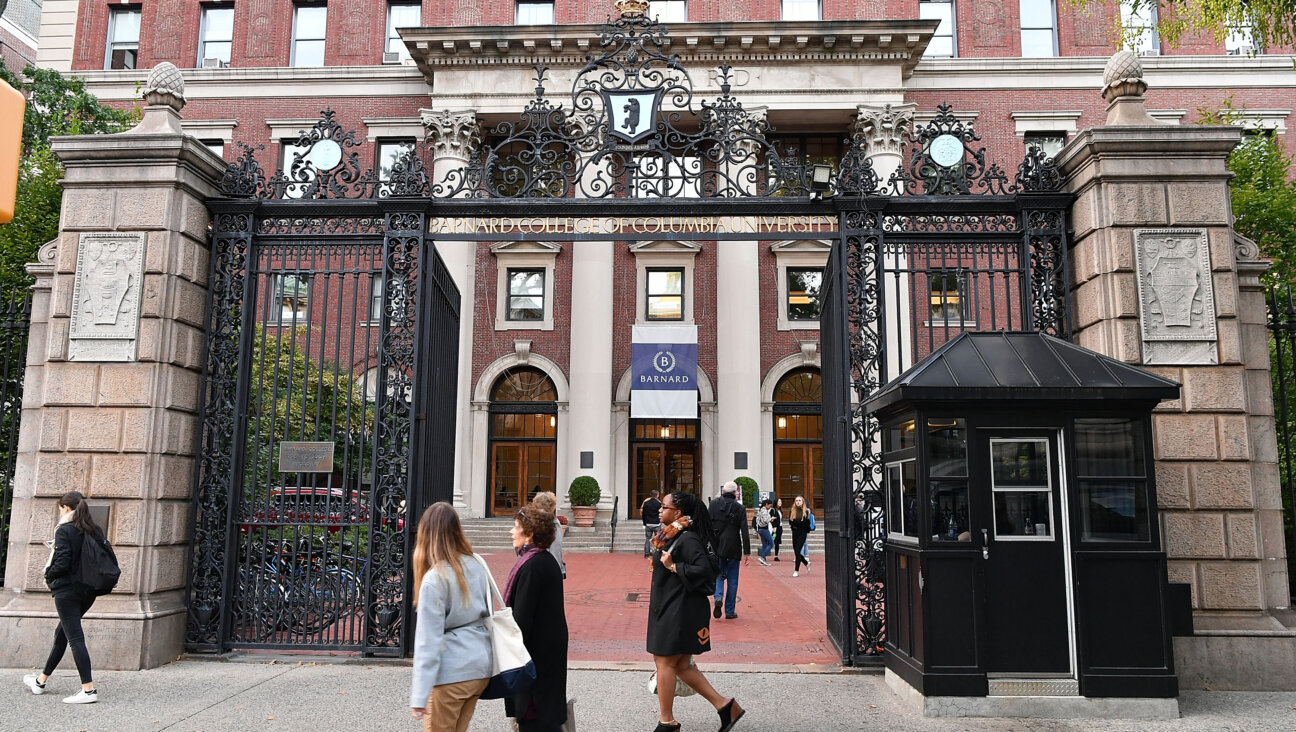The Thirty-Six Who Save the World
Last week’s column ended with the question of where the Hebrew-Yiddish expression Lamed-Vavnik — literally, a “thirty-sixer” — comes from. Why is it that, in Jewish legend, the number of hidden tsadikim — or just men on whom the world depends for its existence — is, in every generation, 36?
The idea that a small number of just or righteous men can save the rest of mankind from destruction is itself as old as the first book of the Bible: We find it in the story of Sodom, in which after bargaining down God, Abraham gets Him to agree that he will not destroy the evil city if 10 righteous men are found in it. They aren’t, of course, but the principle has been established.
And it is to this principle that the second-century Palestinian rabbi Shimon ben Yohai, considered by Jewish tradition to be the author of the seminal kabbalistic text of the Zohar, appeals when he is quoted by the talmudic tractate of Sukkah as declaring: “I [alone] could exonerate the world of [God’s] judgment from the day I was born to the present — and if my son Eliezer were with me, from the day the world was created to the present — and if Yotam the son of Uziahu [a king of Judah who, according to the Bible, “did what is pleasing to the Lord”] were with us, from the day the world was created to the day it ends.” Shimon ben Yohai certainly did not have the modesty attributed by later Jewish legend to a Lamed-Vavnik, but his boast caused the talmudic sage Abbaye, who lived slightly more than 100 years after him, to add to it (Abbaye’s remark is found in the same passage in Sukkah):
“There are never less than 36 just men in the world who greet the Shekhinah [God’s worldly presence] every day, for it is written [in the book of Isaiah 30:18], “Blessed are all who wait for Him” [ashrei kol h.okhei lo], and [the word] lo [“for Him,” spelled Lamed-Vav] is numerically equal to 36.”
Abbaye’s interpretation is in the nature of a numerical pun, since by reading the verse from Isaiah as if there were a comma between “wait” and “for Him,” he gives it the meaning of “Blessed are all who wait, [the] 36.” Although he does not explicitly say that these 36 men keep the world from destruction, his statement, read in the context of Shimon ben Yohai’s declaration, implies that they have the power to ward off the harshness of God’s judgment. This, then, would appear to be the source of the Jewish legend of the Lamed-Vavnik.
But what, in turn, is the source of Abbaye’s statement? It seems highly unlikely that he would have hit on such an interpretation of Isaiah 30:18 had he read it without preconceptions. Rather, he must have been looking to begin with for a biblical verse that could be construed in such a fashion. Why?
This question was addressed by Gershom Scholem, the great scholar of Jewish mysticism, in a short essay published in German in 1962 and in English in 1971, under the title “The Tradition of the Thirty-Six Hidden Just Men.” In this essay, Scholem speculates that the number 36 “originates in ancient astrology, where the 360 degrees of the heavenly circle are divided into thirty-six units of ten, the so-called ‘deans.’” (In astrological literature, these units are more commonly known as “decans.”) And, Scholem continued:
“A dean-divinity ruled over each segment of the thus divided circle of the zodiac, holding sway over ten days of the year…. [In Egyptian Hellenistic sources] the deans were regarded also as watchmen and custodians of the universe, and it is quite conceivable that [in Hellenistic astrology] the number thirty-six, which Abbaye read into Scripture, no longer represented these cosmological powers or forces but rather human figures.”
Abbaye, in other words, either on his own initiative or else on the basis of an older rabbinic tradition, was Judaizing a pagan concept by turning its 36 personified astrological powers that determined thwwe world’s fate into 36 righteous Jews on which the world’s fate depended. In their talmudic version, Scholem observes, these Jews were conceived of as leading rabbis, not as the hidden saints that they were to become in later Jewish legend. This subsequent feature, he speculates, may have accrued under the influence of medieval Islamic mysticism, in which there is a belief that there are in the world 40 (or alternately, 4,000) saints who “live unrecognized by their fellow men while contributing to the continued maintenance of the world through their good deeds.” Yet since the figure of the hidden Lamev-Vavnik is not found in the folklore of Jews living in Islamic lands, and first appears in late medieval times in Eastern Europe, it is also possible, in Scholem’s opinion, that it reflects an independent Jewish development.
It is fitting that this column, which I said last week would be dedicated to the memory of Howard Marblestone, Charles Elliot Professor of Greek and Latin at Lafayette College, should have led us back from the Lamev-Vavnik of popular Yiddish culture to the esoterica of Graeco-Roman astrology. Howard would no doubt have liked that. Ave atque vale!
Questions for Philologos can be sent to [email protected].
The Forward is free to read, but it isn’t free to produce

I hope you appreciated this article. Before you go, I’d like to ask you to please support the Forward.
Now more than ever, American Jews need independent news they can trust, with reporting driven by truth, not ideology. We serve you, not any ideological agenda.
At a time when other newsrooms are closing or cutting back, the Forward has removed its paywall and invested additional resources to report on the ground from Israel and around the U.S. on the impact of the war, rising antisemitism and polarized discourse.
This is a great time to support independent Jewish journalism you rely on. Make a gift today!
— Rachel Fishman Feddersen, Publisher and CEO
Support our mission to tell the Jewish story fully and fairly.
Most Popular
- 1

Opinion The dangerous Nazi legend behind Trump’s ruthless grab for power
- 2

News Who is Alan Garber, the Jewish Harvard president who stood up to Trump over antisemitism?
- 3

News Student protesters being deported are not ‘martyrs and heroes,’ says former antisemitism envoy
- 4

Opinion What Jewish university presidents say: Trump is exploiting campus antisemitism, not fighting it
In Case You Missed It
-

Fast Forward A federal agency survey reportedly asks Barnard employees if they’re Jewish
-

Opinion A Palestinian leader just gave Trump an unprecedented opening to pursue peace
-

Fast Forward NIH bans grants for schools that boycott Israeli companies
-

Fast Forward An elite Jewish society at Yale fractures over its director’s embrace of Itamar Ben-Gvir
-
Shop the Forward Store
100% of profits support our journalism
Republish This Story
Please read before republishing
We’re happy to make this story available to republish for free, unless it originated with JTA, Haaretz or another publication (as indicated on the article) and as long as you follow our guidelines.
You must comply with the following:
- Credit the Forward
- Retain our pixel
- Preserve our canonical link in Google search
- Add a noindex tag in Google search
See our full guidelines for more information, and this guide for detail about canonical URLs.
To republish, copy the HTML by clicking on the yellow button to the right; it includes our tracking pixel, all paragraph styles and hyperlinks, the author byline and credit to the Forward. It does not include images; to avoid copyright violations, you must add them manually, following our guidelines. Please email us at [email protected], subject line “republish,” with any questions or to let us know what stories you’re picking up.















